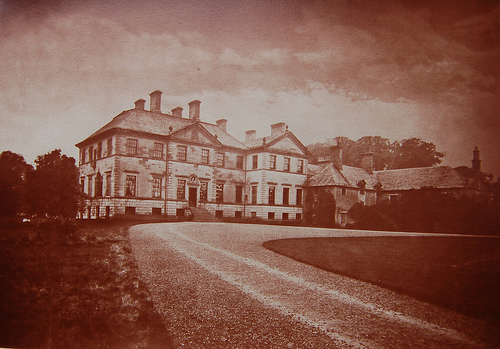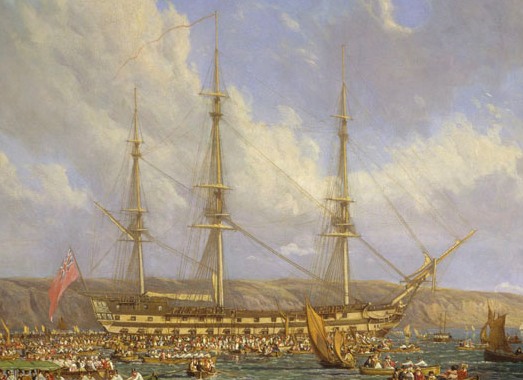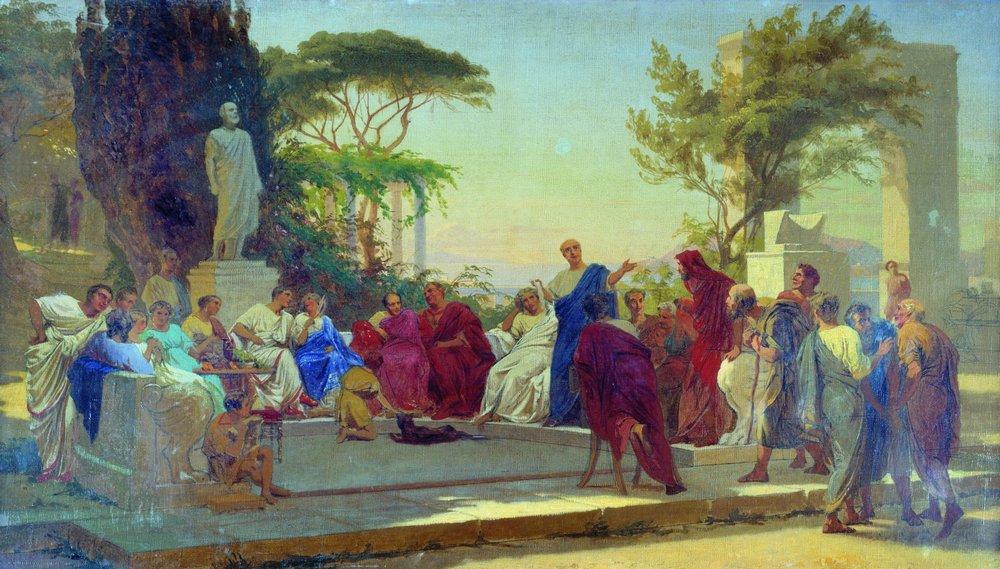|
Charles Hope-Weir
The Hon. Charles Hope-Weir (or Hope-Vere; 8 May 1710 – 30 December 1791) was a Scottish politician. Life Born The Hon. Charles Hope, he was the second son of Charles Hope, 1st Earl of Hopetoun and Lady Henrietta Johnstone, daughter of William Johnstone, 1st Marquess of Annandale. In 1730 he inherited the Craigiehall estate, in the parish of Dalmeny, West Lothian, from his uncle, the 2nd Marquess of Annandale. He adopted the name Hope-Weir, and the arms of the Weir family, on his marriage in 1733 to Catherine Weir, daughter and heiress of the Weir Baronets of Blackwood, Lanarkshire. The family name was later changed to Hope-Vere. On 13 May 1743 he was elected Member of Parliament (MP) for Linlithgowshire, a seat he held until 1769, when he stepped down. He was appointed Governor of Blackness Castle in 1744. He later held the posts of Commissary General of the Musters in Scotland, and Ranger of Ettrick Forest.Wood, pp. 150–151 In 1754, with the encouragement of his uncle, ... [...More Info...] [...Related Items...] OR: [Wikipedia] [Google] [Baidu] |
Genoa
Genoa ( ; ; ) is a city in and the capital of the Italian region of Liguria, and the sixth-largest city in Italy. As of 2025, 563,947 people live within the city's administrative limits. While its metropolitan city has 818,651 inhabitants, more than 1.5 million people live in the wider metropolitan area stretching along the Italian Riviera. On the Gulf of Genoa in the Ligurian Sea, Genoa has historically been one of the most important ports on the Mediterranean: it is the busiest city in Italy and in the Mediterranean Sea and twelfth-busiest in the European Union. Genoa was the capital of one of the most powerful maritime republics for over seven centuries, from the 11th century to 1797. Particularly from the 12th century to the 15th century, the city played a leading role in the history of commerce and trade in Europe, becoming one of the largest naval powers of the continent and considered among the wealthiest cities in the world. It was also nicknamed ''la S ... [...More Info...] [...Related Items...] OR: [Wikipedia] [Google] [Baidu] |
William Johnstone Hope
Vice-Admiral Sir William Johnstone Hope, GCB (16 August 1766 – 2 May 1831) was a prominent and controversial British Royal Navy officer and politician in late eighteenth and early nineteenth century Britain, whose career experienced fleet actions, disputes with royalty, party politics and entry to both Russian and British orders of chivalry. A popular officer, Hope served with Nelson, Duncan and Lord Keith through several campaigns, making connections which enabled him to secure a lengthy political career after his retirement from the Royal Navy in 1804 due to ill-health. After 26 years in Parliament, Hope was largely inactive and instead served as a Lord of the Admiralty and commissioner of Greenwich Naval Hospital. Hope died in 1832 after 55 years of naval and political service and was buried in the family plot in Scotland. Early life William Johnstone Hope was born the third son of John Hope and his wife Mary Breton. The Hopes were descendants of the first Earl of H ... [...More Info...] [...Related Items...] OR: [Wikipedia] [Google] [Baidu] |
John Hope (British Army Officer, Born 1765)
Lieutenant-General Sir John Hope GCH (15 July 1765 – August 1836) was a Scottish officer of the British Army who was a commander under the Duke of Wellington during the Peninsular War. Personal life and family John Hope was born 15 July 1765. His father was the politician and writer of the same name. His mother, Mary, committed suicide in June 1767, leaving young John and his two brothers, Charles and William, to be cared for by their father.Heathcote p.68 Charles Hope became a Member of Parliament and high court judge, while William Johnstone Hope joined the Royal Navy, eventually rising to the rank of Vice Admiral. Hope married the daughter of a Scottish laird, Margaret Scott of Logie, Forfar, on 20 September 1806. They had three daughters. Scott died in March 1813, while Hope was at home recuperating, following the Battle of Salamanca. Hope married again the following year to Jane Hester Macdougall, with whom he had ten children, although only four survived infancy. Hope ... [...More Info...] [...Related Items...] OR: [Wikipedia] [Google] [Baidu] |
Charles Hope, Lord Granton
Charles Hope, Lord Granton, FRSE (29 June 1763 – 30 October 1851), was a Scottish politician and judge. Life Hope was born on 29 June 1763, the eldest son of Mary Breton, the only daughter of Eliab Breton of Forty Hill, Enfield (a granddaughter of Sir William Wolstenholme) and John Hope, Member of Parliament (MP) for Linlithgowshire, and a grandson of Charles Hope, 1st Earl of Hopetoun. He was educated at Enfield Grammar School, and later at the Edinburgh High School, where in 1777 he was the Latin dux. After studying law at the University of Edinburgh he was admitted as an advocate on 11 December 1784, and on 25 March 1786 was appointed a Deputy Advocate. In 1788 he was elected a Fellow of the Royal Society of Edinburgh. His proposers were Allan Maconochie, Lord Meadowbank, James Gregory, and the mathematician John Playfair. Though not conspicuous as a lawyer he was an accomplished public speaker, and in this capacity made himself useful at the Tory political meetings. ... [...More Info...] [...Related Items...] OR: [Wikipedia] [Google] [Baidu] |
Hope & Co
Hope & Co. was a Dutch bank that existed for two and a half centuries. The bank was located in Amsterdam until 1795; originally it concentrated on Great Britain. From 1750 it played a major part in the finances of the Dutch East India Company (VOC) through Thomas Hope (1704-1779), Thomas Hope and his brother Adrian. During the Seven Years' War (1756–1763) the Hope brothers profited from the Netherlands' neutral position and became very wealthy. The Hopes became heavily involved in the Dutch Caribbean, and Danish West Indies. They specialised in plantation loans, in which the entire produce of the plantation was remitted to the lender, who would supervise its sale in order to secure repayment. In this way, the Hopes helped the plantation economy to become integrated into a global network of financiers and consumers. The Hope family were among the richest in Europe at the time. The family business focused on financing commercial transactions and especially on issuing money loans ... [...More Info...] [...Related Items...] OR: [Wikipedia] [Google] [Baidu] |
John Hope (writer)
John Hope (1739–1785) was a British merchant, writer and politician in the eighteenth century who briefly served as Member of Parliament for Linlithgowshire before being dismissed by his cousin John Hope, 2nd Earl of Hopetoun after conflict over the John Wilkes affair. Following his dismissal from Parliament, Hope embarked on a career as a poet and essayist and raised three sons following the suicide of his wife in 1767. His sons were all prominent men, becoming a noted judge, general and admiral in turn. Life John Hope was born in 1739, the son of Charles Hope and Catherine Weir and grandson of Charles Hope, 1st Earl of Hopetoun. His father had three wives and nine children in succession and George Johnstone Hope was a much younger half-brother. He was educated at Enfield Grammar School, Middlesex until he was 13, when he was sent to Amsterdam to learn the merchant trade from a Dutch branch of the family, Thomas Hope (1704-1779). Hope returned to in 1759 and operated as a ... [...More Info...] [...Related Items...] OR: [Wikipedia] [Google] [Baidu] |
James Joseph Hope-Vere
James Joseph Hope-Vere of Craigiehall FRSE (3 June 1785 – 19 May 1843) was a 19th-century Scottish landowner and politician. As a politician he was deemed a moderate Whig. Early life He was born on 3 June 1785 the first surviving son of William Hope-Vere and his wife, Sophia Corrie of Dumfries. His paternal grandfather was Charles Hope-Weir MP (1710–1791). He was cousin to Charles Hope, Lord Granton. He studied law at St John's College, Cambridge from 1801 and entered Lincoln's Inn to train as a barrister. He was called to the bar in 1820 but never practised. At Cambridge he and George Pryme became lifelong friends. Career In 1811, on the death of his father, he inherited the Craigiehall estate near Linlithgow and the Blackhall estate near Lanark, totalling 8000 acres in all. He employed the Edinburgh architect Thomas Brown to extend the house but did not execute his plans. In 1828 new plans were drawn by William Burn for a north wing and this time were carried ou ... [...More Info...] [...Related Items...] OR: [Wikipedia] [Google] [Baidu] |
Sir William Weir, 2nd Baronet
''Sir'' is a formal honorific address in English for men, derived from Sire in the High Middle Ages. Both are derived from the old French "" (Lord), brought to England by the French-speaking Normans, and which now exist in French only as part of "", with the equivalent "My Lord" in English. Traditionally, as governed by law and custom, Sir is used for men who are knights and belong to certain orders of chivalry, as well as later applied to baronets and other offices. As the female equivalent for knighthood is damehood, the ''suo jure'' female equivalent term is typically Dame. The wife of a knight or baronet tends to be addressed as Lady, although a few exceptions and interchanges of these uses exist. Additionally, since the late modern period, Sir has been used as a respectful way to address a man of superior social status or military rank. Equivalent terms of address for women are Madam (shortened to Ma'am), in addition to social honorifics such as Mrs, Ms, or Miss. Etym ... [...More Info...] [...Related Items...] OR: [Wikipedia] [Google] [Baidu] |
Edinburgh Airport
Edinburgh Airport is an international airport located in the Ingliston area of Edinburgh, Scotland. It is located west of the city centre, just off the M8 motorway (Scotland), M8 and M9 motorway (Scotland), M9 motorways. It is owned and operated by Edinburgh Airport Limited. The airport is the busiest airport in Scotland based on passenger numbers, with 14.4 million passengers flying from the airport in 2023, a 28% increase on passenger numbers from 2022. A total of 35 airlines use the airport to fly to over 152 international destinations. During 2024, Edinburgh Airport experienced its busiest year in terms of passenger numbers, with a total of 15 million passengers. It also marked the busiest year for any Scottish airport in history. As well as being the busiest airport in Scotland, Edinburgh Airport is the List of busiest airports in the United Kingdom, sixth busiest airport in the United Kingdom. History Early years Turnhouse Aerodrome was the northernmost British air d ... [...More Info...] [...Related Items...] OR: [Wikipedia] [Google] [Baidu] |
Horace
Quintus Horatius Flaccus (; 8 December 65 BC – 27 November 8 BC), Suetonius, Life of Horace commonly known in the English-speaking world as Horace (), was the leading Roman lyric poet during the time of Augustus (also known as Octavian). The rhetorician Quintilian regarded his '' Odes'' as the only Latin lyrics worth reading: "He can be lofty sometimes, yet he is also full of charm and grace, versatile in his figures, and felicitously daring in his choice of words."Quintilian 10.1.96. The only other lyrical poet Quintilian thought comparable with Horace was the now obscure poet/metrical theorist, Caesius Bassus (R. Tarrant, ''Ancient Receptions of Horace'', 280) Horace also crafted elegant hexameter verses ('' Satires'' and '' Epistles'') and caustic iambic poetry ('' Epodes''). The hexameters are amusing yet serious works, friendly in tone, leading the ancient satirist Persius to comment: "as his friend laughs, Horace slyly puts his finger on his every fault; once let ... [...More Info...] [...Related Items...] OR: [Wikipedia] [Google] [Baidu] |
John Adam (architect)
John Adam (5 March 1721 – 25 June 1792) was a Scottish architect, building contractor and supervisor. Life Born in Linktown of Abbotshall, now part of Kirkcaldy, Fife, he was the eldest son of architect and entrepreneur William Adam and his wife Mary Robertson (1698–1761). His younger brothers Robert and James Adam also became architects. The Adam family moved to Edinburgh in 1728, as William Adam's career as a designer of country houses began to take off. John attended Dalkeith Grammar School, outside the city, although he did not proceed to university as he was already being involved in the family businesses. However, the family home became a hub of the Scottish Enlightenment, with numerous Edinburgh ''virtuosi'' visiting. It is believed his father allowed him to do some work on Montrose Mausoleum in Aberuthven, Perthshire, in 1736, for his name is in an inscription in the northern wall. During the 1740s, William was gradually handing over control to his eldest ... [...More Info...] [...Related Items...] OR: [Wikipedia] [Google] [Baidu] |






